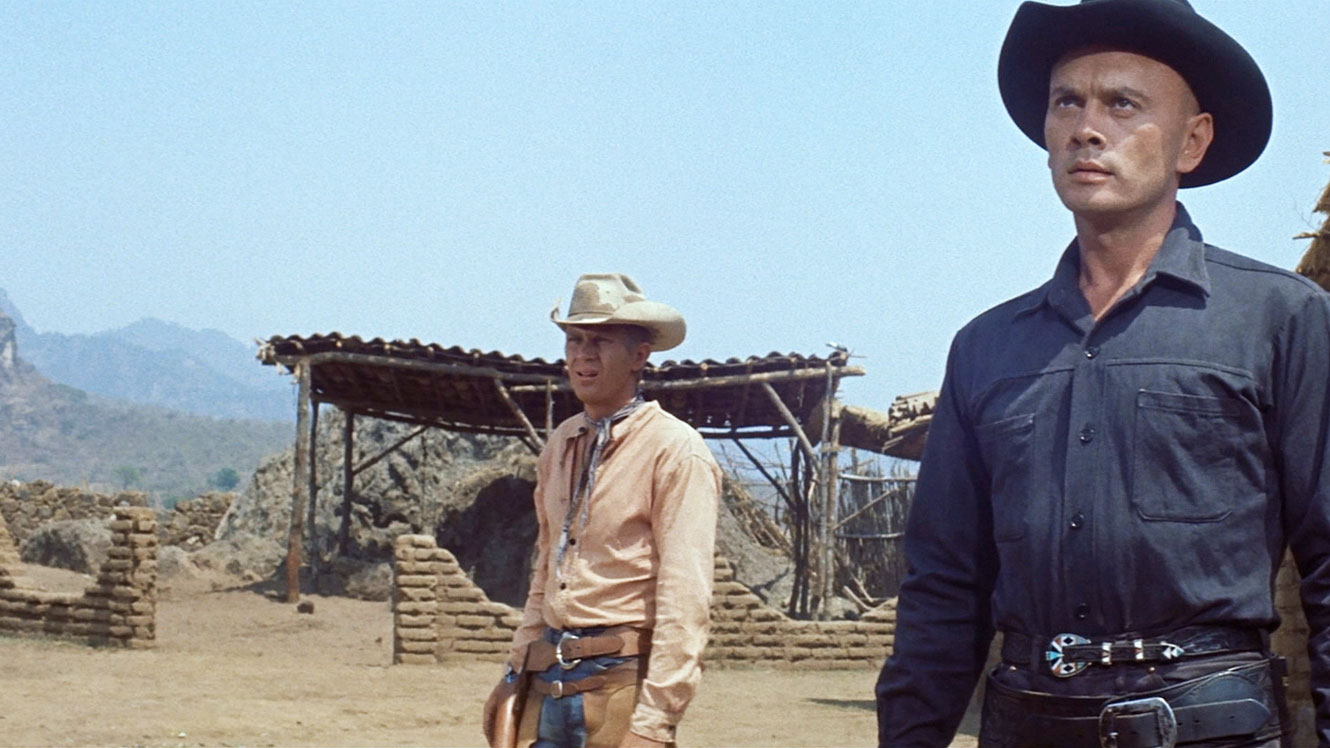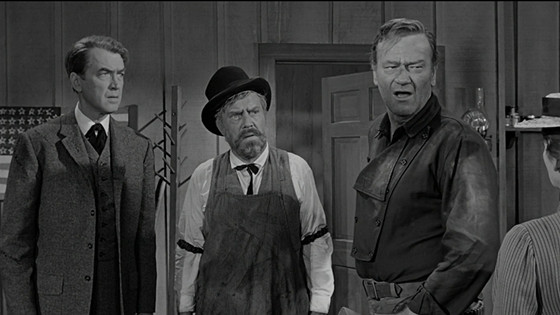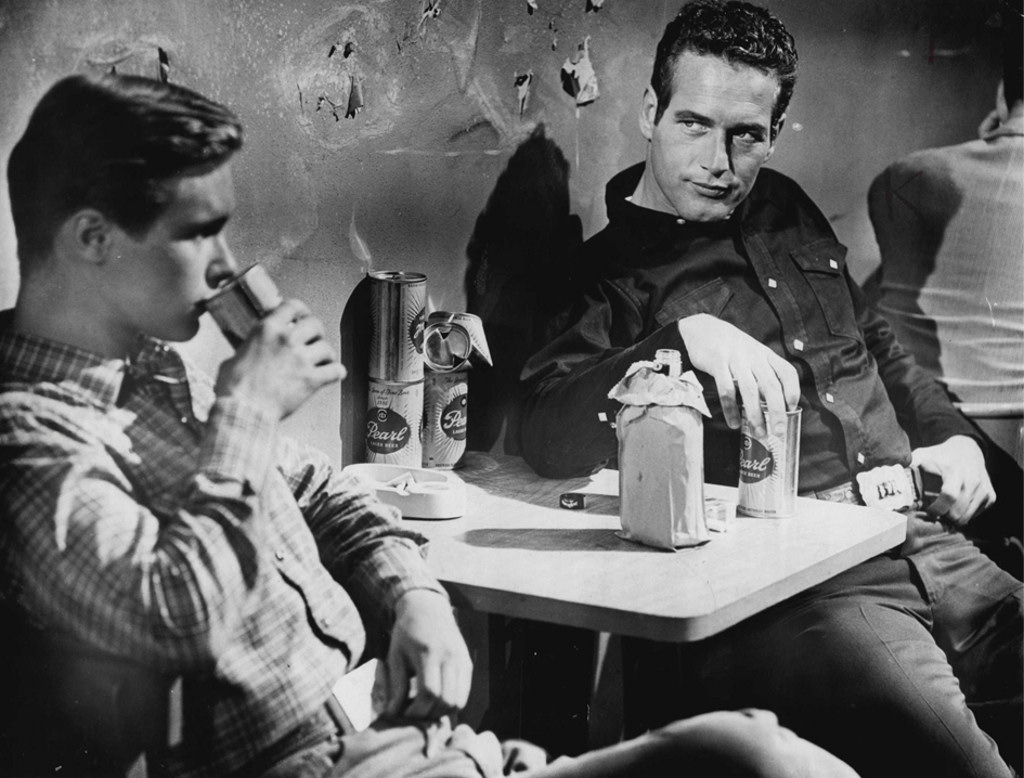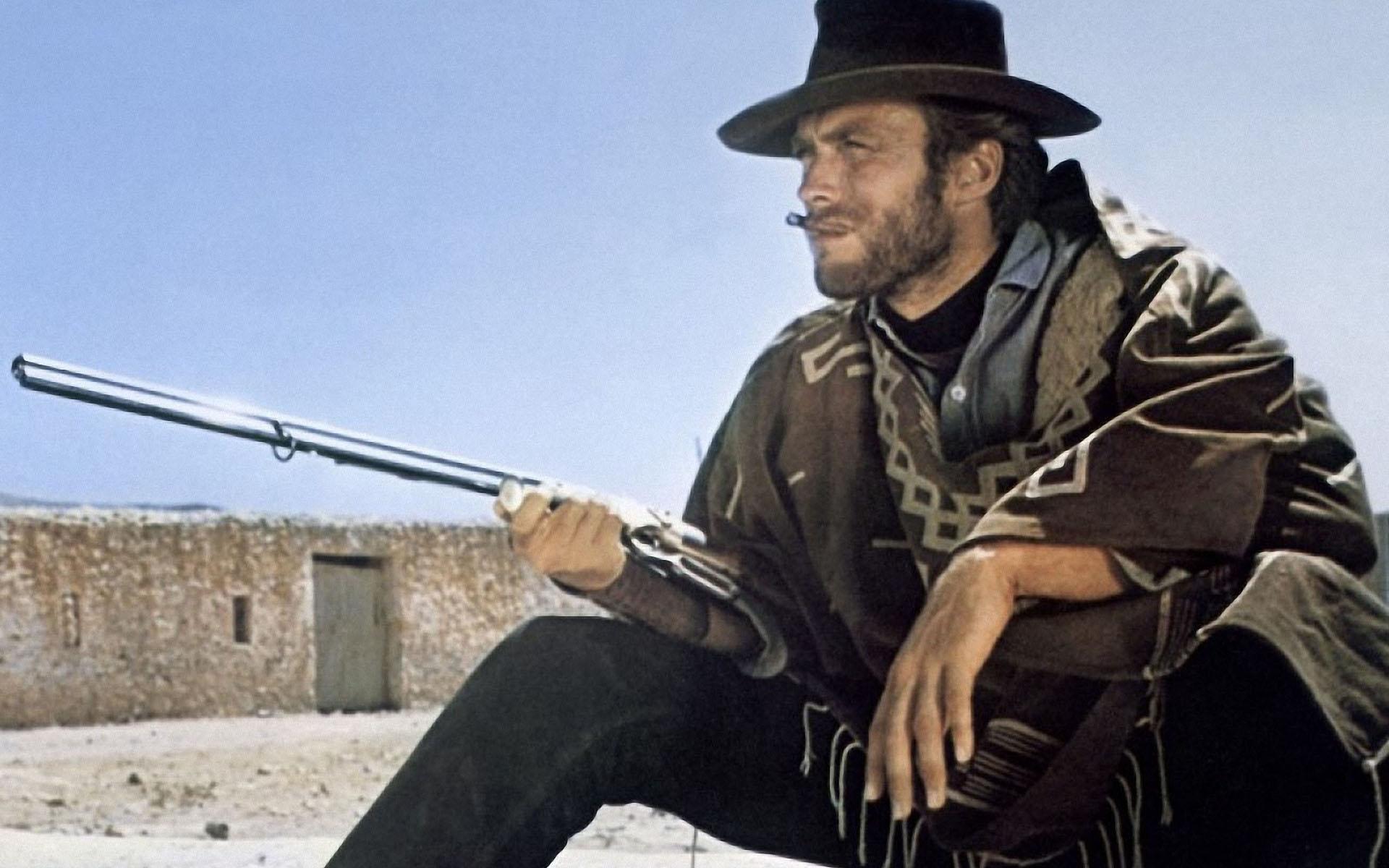
When assembling a chronological list of the ten best Westerns of the 1960s, one thing seems abundantly clear: the middle years of the decade are surprisingly barren. The first few years of the 1960s feel massively different stylistically to the outstanding Westerns of 1969; as if the assassination of President Kennedy had fractured America’s self-belief which had subsequently damaged its most essential genre.
That the Italian Spaghetti Westerns dominate the 1964-1968 years indicates a growing, international desire to emphasise the violence and greed of the USA whilst reimagining the genre with a laconic coolness and idiosyncratic aural and visual trademarks. When Hollywood got back to making its defining Westerns, there was a mournful, elegiac tone to them that had not been seen before, and has set the stage for the genre since. These ten films embody that shift from the traditional to the subversive.
1. The Magnificent Seven (1960)

A true sensei of film trivia will be able to name the seven actors in this endlessly enjoyable remake of Akira Kurosawa’s Seven Samurai. They are, of course, Yul Brynner, Steve McQueen, Charles Bronson, James Coburn, Robert Vaughn, Brad Dexter and Horst Bulchoz. This septet of gunslingers is hired by scared villagers who seek protection from Eli Wallach’s frequent bandit raids. This is one of the film’s strengths; Seven Samurai’s bandit chief has little screen presence compared to Wallach.
Elmer Bernstein’s central theme is one of the most stirring, warming pieces of music to grace the silver screen. Hearing it is a surefire way to end up watching the entire film then buying a horse afterwards. Loaded with iconic scenes such as James Coburn’s introductory duel and McQueen riding shotgun with Brynner, the star power and simplicity of the story fuse into a worthy Hollywood remake of a foreign language film.
Observe how McQueen constantly draws attention to himself when he is not the focus of the scene – he did not get on well with Brynner and subsequently tried to overshadow him as much as he could. This icy contest of masculinity seems pathetic next to Charles Bronson, whose tough life and years of military service puts him far ahead of the two bickering stars.
2. The Man Who Shot Liberty Valance (1962)

John Ford defined the Revisionist Western with one quote: “when the legend becomes fact, print the legend.” A bizarre companion piece to Alfred Hitchcock’s Psycho, this too sees its director go for a stripped back approach to filming: deliberate black and white photography replaces colour and studio sets were favoured over location work. As such, The Man Who Shot Liberty Valance is a direct response to Ford’s own mythic Westerns; he removes his treasured Monument Valley from the landscapes and focuses on John Wayne and Jimmy Stewart’s interactions within the confines of rooms rather than deserts.
Told in flashback by Stewart’s Senator Ranse Stoddard, the story details his coming 25 years ago to a Western town and the friendship he struck up with Tom Doniphon (John Wayne). This leads to the title, in which Stoddard is remembered for slaying Liberty Valance, an outlaw played by Lee Marvin.`
Inflected with the spirit of film noir in its structure and shadowy cinematography (Ford noted that the climactic moment would not work in colour), The Man Who Shot Liberty Valance also stars Woody Strode, Andy Devine and Lee Van Cleef in supporting roles. An elegiac monument to Ford’s legendary career, this has influenced hordes of Westerns since.
3. Hud (1963)

History has overlooked Martin Ritt as a director. His films from the 1950s right to 1990 lack the discernible similarities of an auteur filmmaker, but his steady hand with great actors has allowed a bunch of his films to retain a ‘quiet classic’ status. Hud is one of his best films, making exquisite use of Paul Newman’s exponentially brightening star power in the early 1960s.
Housing the spirit of the 1970s anti-hero a decade before that became the mainstream, Paul Newman’s Hud Bannon is a wholly dislikeable character. Unabashed in his ambitious self-centeredness, Hud’s physical attractiveness is positioned as a devilish snake, coaxing the innocent towards his despicable personality. When his father, Homer Bannon (Melvyn Douglas), finds he has a seriously infected herd of cattle, Hud’s solutions teeter on the barbaric.
A film of generational divide, another of the film’s prescient themes before the New Wave, the inclusion of Hud’s nephew, Lonnie (Brandon deWilde, of Shane fame) enriches the differences between the past, present and future generations, with Lonnie almost idolising the cruel Hud. The contrasts of the family are highlighted by James Hong Howe’s astounding monochrome cinematography, which took home the Oscar alongside Melvyn Douglas and Patricia Neal’s performances, the latter playing Alma, a housekeeper.
4. For a Few Dollars More (1965)

A Fistful of Dollars may have lit the dynamite that blew up the Western genre for international production, but Sergio Leone’s Spaghetti Western sequel, For a Few Dollars More is the superior picture, largely because A Fistful of Dollars cannot avoid the comparisons to Kurosawa’s Yojimbo. Clint Eastwood returns as The Man With No Name, here called Manco. With a bigger budget and runtime than before, Leone doubles the protagonists by adding Colonel Mortimer, played with a wizened cool by Lee Van Cleef. These two bounty hunters join forces to track and kill El Indio (Gian Maria Volanté) and his bank robbing gang.
An amalgam of genres, For a Few Dollars More contains the DNA of the heist film, the buddy-cop film, the revenge film and the action film, all within the setting of Leone’s Old West: a space where the absence of law, religion and women has left men into prowling hunters.
Exceedingly entertaining, the introductory sequences for Manco and Mortimer are superb at displaying their character. Manco is quick to beat up (with one hand, Spencer Tracy style) his target then quickly guns down three men in a bar. Mortimer slowly tracks his solo target to a bedroom, then calmly follows him out into the street so he can execute him with a long range shot. This is an effective shorthand for showing how Manco is young and quick whilst Mortimer is calm and composed. This is put into action in their first physical interaction, cinema’s greatest dick-measuring competition if ever there was one.
5. Django (1966)

Sergio Corbucci plays second-fiddle to Leone in the history books, releasing great films that he just missed out on being the pioneer of. But Django is a red-hot classic that brought composer Luis Bacalov into the mainstream – his track ‘La Corsa (2nd version)’ is a peak for the genre.
Franco Nero plays Django, a stranger who walks into a town pulling a coffin behind him. Like A Fistful of Dollars, this is a town divided between Confederate racists and Mexican revolutionaries. It has a bar, prostitutes and a street filled with mud. It is not a place to be, so much so that Django’s coffin no longer feels as out of place as when originally seen. An ugly film, Corbucci’s vision is shaped by extreme bloodlust. Machine gun massacres and an ear slicing are the two memorable sequences, but there is also rape and mutilation. It is a far darker Western than any that came before.
Despite all this, the film still effectively entertains through its synthesis of political undertones and smooth storytelling. Nero is a sturdy lead, one with a hint of love and depth that feels refreshing next to Eastwood’s silent gunslinger. Quentin Tarantino owes tremendous amounts of his career to Sergio Corbucci, and Django in particular (“the ‘d’ is silent,” Jamie Foxx tells Franco Nero in Django Unchained.